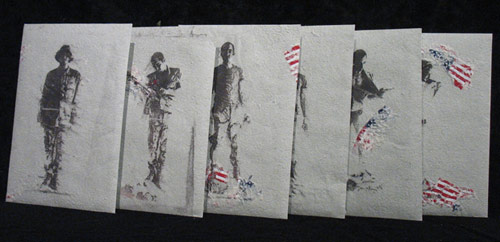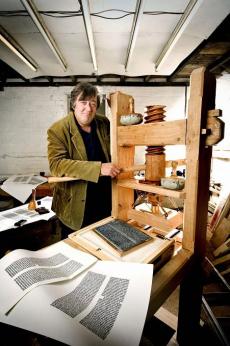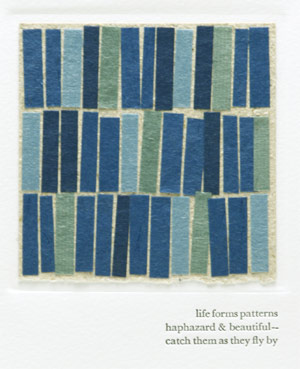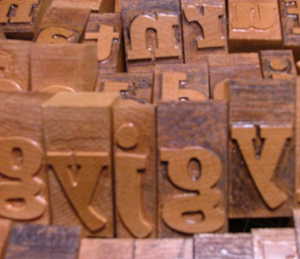 |
| Scott Polzen’s handcut wood type based on Carol Twombly’s Chaparral Bold |
On the wall of my office, I have several large pieces of faux wood type that I made by tracing letters in my favorite font-face onto some foam core, cutting out the letters, mounting them to frames I made and then painting the whole assemblage. Occassionally I think idly about trying to make some type of out of real wood.
![]() So it was fun to find out about Scott Polzen, who has made wood type from scratch. So far he’s made 3-1/2 complete sets, each using a progressively more sophisticated method for carving the letters. He constructed the first set by carving 1/4″ high letters and then mounting them to blocks of wood. In the last set, he used a pantograph, an instrument that allows one to scale and copy diagrams, or in this case, letters, and was able to create a single type-high block for each letter.
So it was fun to find out about Scott Polzen, who has made wood type from scratch. So far he’s made 3-1/2 complete sets, each using a progressively more sophisticated method for carving the letters. He constructed the first set by carving 1/4″ high letters and then mounting them to blocks of wood. In the last set, he used a pantograph, an instrument that allows one to scale and copy diagrams, or in this case, letters, and was able to create a single type-high block for each letter.
![]() You can see the various typefaces Scott has made on his website, as well as an explanation of how he made each set. He also has a video on YouTube showing him cut out one of the letters.
You can see the various typefaces Scott has made on his website, as well as an explanation of how he made each set. He also has a video on YouTube showing him cut out one of the letters.

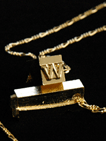
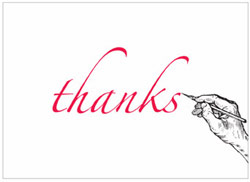 Wow! Did I ever hit the jackpot! So many great poems were submitted to my
Wow! Did I ever hit the jackpot! So many great poems were submitted to my 